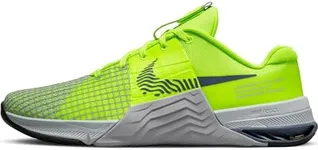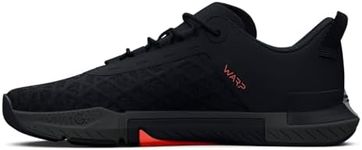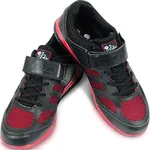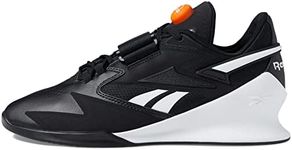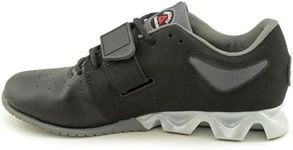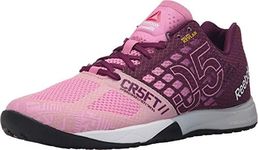Buying Guide for the Best Crossfit Training Shoes
Choosing the right CrossFit training shoes is crucial for enhancing your performance and ensuring safety during workouts. CrossFit involves a variety of movements, including lifting, running, jumping, and climbing, so your shoes need to be versatile and supportive. When selecting CrossFit shoes, consider the type of workouts you do most frequently and the specific needs of your feet. The right pair will provide stability, flexibility, and comfort, helping you to perform at your best while minimizing the risk of injury.StabilityStability in CrossFit shoes is essential because it helps you maintain balance during weightlifting and other high-intensity movements. A stable shoe will have a firm heel and a wide base, which provides a solid foundation for lifting heavy weights. If your workouts include a lot of lifting, look for shoes with enhanced stability features. For those who focus more on cardio or agility exercises, a moderate level of stability might be sufficient.
CushioningCushioning refers to the amount of padding in the shoe, which affects comfort and shock absorption. In CrossFit, you need a balance between cushioning and stability. Too much cushioning can make the shoe unstable for lifting, while too little can lead to discomfort during high-impact activities. If your workouts include a lot of running or jumping, opt for shoes with moderate cushioning. For primarily lifting-focused workouts, minimal cushioning might be preferable.
DurabilityDurability is important because CrossFit workouts can be tough on shoes, involving a lot of friction and impact. Durable shoes are made from high-quality materials that can withstand the rigors of various exercises. Look for shoes with reinforced areas, especially around the toe and heel, as these are common points of wear. If you train frequently or engage in intense workouts, prioritize durability to ensure your shoes last longer.
FlexibilityFlexibility in a shoe allows for a natural range of motion, which is important for exercises that require bending and quick movements. A flexible shoe will have a more pliable sole and upper, allowing your foot to move freely. If your CrossFit routine includes a lot of running, jumping, or agility drills, look for shoes with good flexibility. For workouts that are more static or lifting-focused, flexibility might be less of a priority.
BreathabilityBreathability refers to how well the shoe allows air to circulate, keeping your feet cool and dry. This is important for comfort, especially during long or intense workouts. Shoes with mesh uppers or ventilation features offer better breathability. If you tend to sweat a lot or train in warm environments, prioritize breathability to prevent discomfort and odor. For those in cooler climates or with shorter workout sessions, breathability might be less critical.
FitThe fit of a CrossFit shoe is crucial for comfort and performance. A well-fitting shoe should be snug but not tight, with enough room in the toe box to wiggle your toes. It should also provide adequate support around the midfoot and heel. When trying on shoes, consider the shape and width of your foot. If you have wide feet, look for shoes that offer a wider fit. For those with narrow feet, a more snug fit might be necessary to prevent slipping.
